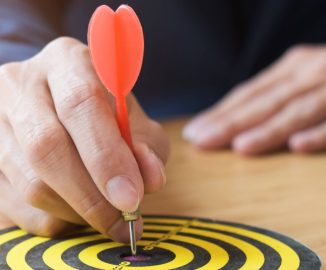Strategic thinking is as critical to life as it is to a career. It involves planning ahead to develop, adapt, and achieve long-term goals, and it is accomplished by practicing a set of critical skills.
Keeping your eyes ahead ties in with a lot of Zen philosophies, as well — it necessitates knowing yourself intimately and, somewhat paradoxically, living in the moment. Let’s take a look at the most important parts of strategic thinking.
1. Practice patience.
Rushing a long-term goal can lead to crossing a premature finish line. Accept that a long timeline may be involved and that impatience may result in skipping vital steps. Projects need time to ripen and reach maturity.
2. Be in control of your emotions.
To master strategic thinking, you must learn to identify your emotions and what’s driving them. Treat your emotions with detachment, acknowledging but not allowing them to dictate your actions. Practice controlling your emotions through posture, deep breathing, positive thinking, and speaking kindly and compassionately. Balance your creativity with cool-headed realism.
3. Be open to feedback and change.
Reaching a goal is not about magically predicting and adhering to every step-by-step detail of a preconceived process. Plans change. Successful strategic thinkers seek out advice, accept change, and reconfigure plans when needed.
4. Practice decisiveness.
Nothing kills momentum like dithering. Consider your options wisely, consult others and take their opinions into account, and then make your decision and go forth with confidence.
5. Listen, observe, and consider different angles.
You should be closely attuned to the world around you. Those who pay attention to the people and opinions around them are best suited to handle changes when they occur. By being able to shift perspective and view an issue from different angles, you will be better able to make an informed decision.
6. Build a detailed plan of action.
The more detailed, the better. Each goal should have an associated timeline and amount of resources required, which will make compartmentalized adjustments easier when needed.
7. Maintain your vision.
Your plan starts and ends with a vision. Your vision should be a combination of both creative and pragmatic thinking. It is also what inspires others to help you join in and make it a reality, and it should be both positive and lucid. Throughout the changes, challenges, and setbacks that occur throughout long-term projects, keeping your vision in mind is what will propel your forward momentum.
Works Cited
“Critical Strategic Thinking Skills.” Center for Simplified Strategic Planning, www.cssp.com/CD0808b/CriticalStrategicThinkingSkills/.


